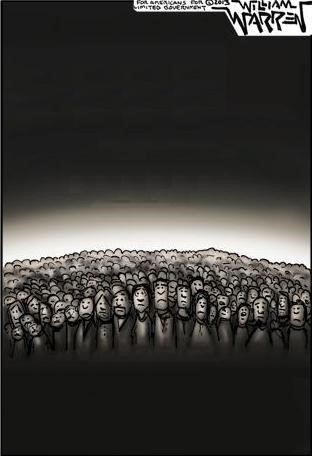In 2014, only 36 percent of jobs available — 54.8 million — required some college, a postsecondary nondegree award, a Bachelor’s degree or more at the entry level according to data compiled by the Bureau of Labor Statistics.
Yet at the same time, today, 61 percent of the civilian population aged 25 and over has some college, a Bachelor’s degree or more, accounting for 131.4 million people. That accounts for approximately 76.6 million Americans who might have been better off financially not incurring any student loan debt and entering the labor force much sooner.
The overwhelming incentive is for younger people to go to college to improve their job prospects thanks to the massive misallocation of hundreds of billions of dollars of federally subsidized grants and loans for higher education.
Yet, despite all the subsidies, shortfalls are found throughout labor markets, whether that be in the medical and health care professions, STEM, railroad engineers, electricians, occupational therapists or machinists.
This week, the White House is promoting Workforce Development Week with major job retraining initiatives being promoted by the Department of Labor. Obviously, many factors play into Americans not being properly trained to perform the jobs actually available in the economy.
To the extent the Trump administration recognizes the need for non-college job training — a substantial majority of jobs do not require college — with the White House’s calls for private sector-based apprenticeship programs, they are to be praised.
Yet, the elephant in the room remains education. Overall, we’re still peddling the fiction that a college education is for everyone and pushing millions of our brightest into an environment not conducive for producing as many good paying jobs per capita as prior generations.
The reason is our higher education system does not — and cannot, by design — efficiently marshal resources to produce the laborers our economy needs.
We’re just throwing hundreds of billions of dollars of subsidies at the higher education wall and watching in slow motion as the catastrophe unfolds.
Last month, Gross Domestic Product (GDP) for the first quarter of 2017 was revised upward to 1.2 percent according to the Bureau of Economic Analysis. It originally came in at 0.7 percent, but even with the upward revision, that stinks, and was certainly not good news to the Trump administration.
Particularly, because without robust economic growth, it will be hard or impossible to create the amount of jobs needed to truly get Americans back to work. And we know that because we just came off the worst decade for economic growth in U.S. history since GDP was invented.
Since the height of the U.S. economy in the late 1990s, with the popping of the dotcom and real estate bubbles in the years since, there has been a huge hit to labor markets, particularly in the working age population of 16 to 64.
Since 1997, the employment-population ratio of 16-64 year olds has dropped, from 73.5 percent to 69.9 percent, accounting for 7.5 million Americans who would have jobs had the rate remained the same.
An additional 8.5 million would be counted as unemployed, bringing the total to more than 15 million rather than the reported 6.9 million had labor participation remained the same, a 9.4 percent unemployment rate instead of the misleading 4.3 percent rate we see today.
When comparatively fewer working age Americans are neither working nor looking for work, while there are simultaneously still job shortages in certain professions as Baby Boomers retire, the reason is because there are quantitatively fewer jobs available per capita and at the same time, we are training an entire generation of Americans for the wrong jobs.
We’re overeducated and underemployed.
Coupled with the continued offshoring of American jobs away from manufacturing, despite all of the education subsidies, labor markets have not adjusted to provide jobs that require all those college degrees we’re producing. Yet the shift the economy has experienced the past two decades away from is undeniable.
President Donald Trump is well aware of these challenges. That is why he campaigned on bringing those jobs back to America — and why he reminded Americans in 2016 that the unemployment rate vastly understates the dire nature of U.S. labor markets.
A lot can collapse in just 20 years. After two successive, failed administrations that have not incentivized doing business in the U.S. all the while pushing the Millennials generation into the overfunded university system, the current states of the U.S. economy and labor markets speak for themselves. Millennials were betrayed by these false promises.
To prevent the same thing from happening to the next generation, the emphasis must now shift, and dramatically. These older institutions must be shattered. The tax dollars currently dedicated to higher education funds should dramatically cut, allowing private markets and institutions to fill in the education and training gaps needed in labor markets as they once did.
When you subsidize everything, you do not incentivize anything. It is good that we are talking about the skills gap in the U.S. labor force, but a discussion on workforce revitalization without looking at the ongoing, utter waste in the higher education system is a joke.
Robert Romano is the senior editor of Americans for Limited Government.








